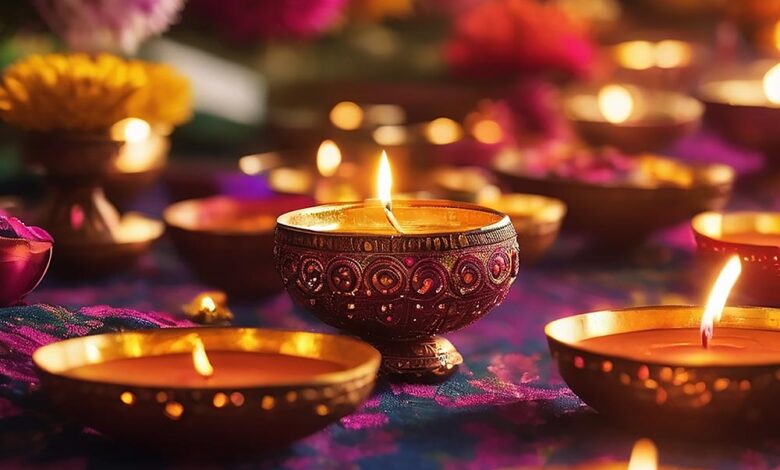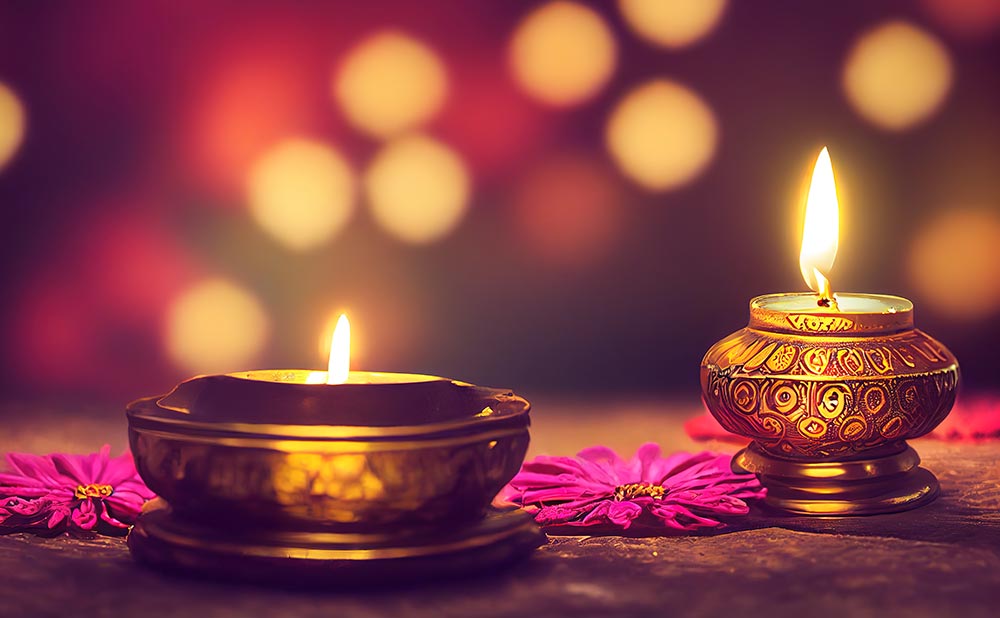Diwali, symbolic of our inner light, helps enlighten lives
Diwali, or the Festival of Lights, celebrated widely across the Indian subcontinent and among Indian communities worldwide, embodies the inner light within all of us and symbolizes the triumph of light over darkness, hope over despair, good over evil, and knowledge over ignorance.

Diwali, or the Festival of Light is one of the most vibrant and widely celebrated festivals across the Indian subcontinent and among Indian communities worldwide. The festival, also known as Deepavali in some Indian states, is celebrated over five days during the Hindu lunisolar month of Kartik, which corresponds to mid-October and mid-November each year. In the Indian subcontinent, Diwali coincides with, and is analogous to, various other religious, spiritual, and historical celebrations marked by different communities, cultures, and religions in the region.
Besides Diwali among Hindus, the festival is celebrated in various forms and names by Jains, Sikhs, and Newar Buddhists in Nepal, as well as by many tribal cultures in the northeastern states of India. For Hindus in India and around the world, the celebration of Diwali has religious connotations that vary based on regional and local interpretations of myths and legends from the Indian epics of the Ramayana and Mahabharata.
While the religious aspect of Diwali is the highlight of the festival for Hindus, it is the historical and sacred aspects, along with the spiritual implications of the festival, that take center stage for Sikhs and Jains.
For adherents of the Jain faith, Diwali venerates the attainment of ‘Moksha’—the highest and noblest objective of the soul—achieved in the 6th century by Lord Mahavira, the 24th and last ‘Tirthankar’ or spiritual leader of the Jains. Meanwhile, the Sikh community worldwide celebrates Diwali as ‘Bandi Chhor Divas’ or Day of Liberation, commemorating the release from imprisonment of their sixth Guru and leader, Guru Hargobind ji, by Mughal invaders in the 17th century. In Nepal, it is celebrated as Tihar or Swanti by Buddhists, especially Newar Buddhists in the Kathmandu Valley.
In India, the origin of Diwali can be traced back to the ancient period when it was celebrated during the Hindu calendar month of Karthik as an important harvest festival. Over time, various legends and myths from the Hindu epics of the Ramayana and Mahabharata were woven into these agrarian celebrations. Today, Diwali is celebrated among Hindus in different regions based on the religious legends they believe in.
In some places, Diwali celebrates both the birth and marriage of the Goddess Lakshmi to Lord Vishnu; in Bengal, the festival is dedicated to the worship of Divine Mother Kali, the Goddess of strength. Lord Ganesha, the elephant-headed God and symbol of auspiciousness and wisdom, is also worshiped in many Hindu homes on this day.

For many Hindus, Diwali commemorates the return of Lord Rama as king of Ayodhya in Northern India, along with his wife Sita and brother Lakshman, after a 14-year-long exile during which he vanquished the demon king Ravana. In joyous celebration of their king’s return, the people of Ayodhya, the capital of Lord Rama’s kingdom, illuminated the town with earthen diyas (oil lamps) and burst firecrackers.
The word Diwali comes from a fusion of two Sanskrit words: Dipa or Deepa, meaning ‘light’ or ‘lamp’, and Awali, meaning ‘a row’, ‘a series’, or ‘a line’. In many parts of India, the festival is celebrated by lighting rows of small earthen oil lamps called diyas, which symbolize the driving away of darkness. In other regions, the Festival of Lights marks the start of a new year in the Hindu calendar.
Beyond its religious, cultural, and historical significance, and despite the contextual differences in its celebration, to people across the vast subcontinent Diwali remains symbolic of the inner light that guides us throughout our lives. The festival resonates with the message of the ultimate victory of light over darkness, hope over despair, good over evil, and knowledge over ignorance.
Light is one of the oldest and most significant enduring symbols in the evolution of mankind, carrying different spiritual, mystical, and metaphorical connotations in various cultures and religions around the world. Notions and symbolisms of light have influenced centuries of philosophical speculation and given rise to a host of religious and philosophical theories over the ages.
In many mythologies of early cultures and religions, light was believed to emanate from the divine supreme being and was considered an attribute of the deity that led to the creation of life, endowing humanity with health, wealth, and knowledge. Gnostics and many agnostics do concur that light remains an enduring symbol of life and hope, joy and happiness, truth, wisdom, and guidance.
In Christianity, Christ is called ‘Light’ in the sense that he enlightens every man, although each individual is free to turn toward or away from that guiding light. The physical light symbolizes the divine presence that penetrates all things while maintaining its purity. Light is also seen as a molding power that leads humanity forward to ultimately unite with the divine. In many parts of the world, light is represented by candles, lamps, fires, and fireworks, depicting the ultimate victory of light in its perpetual struggle against darkness.
Today, in many places, Diwali has taken on a more temporal note, with merchants, retailers, and corporations using the festival to market and sell their products. The five-day-long Festival of Lights has become almost synonymous with shopping frenzies, bargain offers, and special discounts, as well as an occasion for socializing and entertaining among family and friends.
Like any major festival, preparations for Diwali in India begin days or weeks in advance, with the formal festival lasting five days, starting two days before the night of Diwali and ending two days after. Each day of Diwali has its own tale, legend, and myth to tell. Sweet treats are exchanged, houses are thoroughly cleaned, and homes are lit with diyas and decorated with rangoli—the colorful designs and patterns created on the threshold and floor during the festival using natural colors, dyes, flowers, and other materials. New clothes are worn, and each day of the festival is marked by different traditional rituals and colors.
Through all the celebrations and festivities, what remains true and consistent throughout the five days of Diwali is the celebration of life, its enjoyment, and goodness. This year, even if you are away from the sights and sounds of Diwali celebrations at home in India, take a moment to light a candle or diya, sit quietly, close your eyes, breathe deeply, and concentrate on that supreme light that illuminates your inner self and guides you along the path of life.













